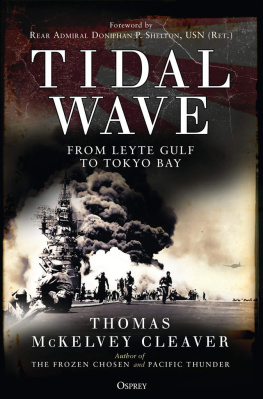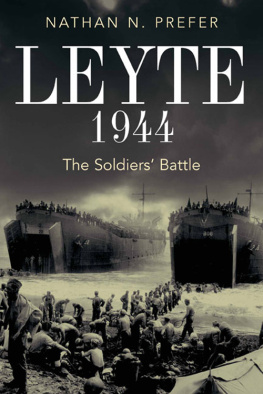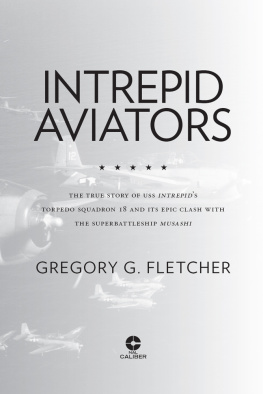The Battle to Save the Houston
This book has been brought to publication with the generous assistance of Marguerite and Gerry Lenfest.

The Battle to Save the Houston
OCTOBER 1944 TO MARCH 1945
John Grider Miller


This book has been brought to publication by the generous assistance of Marguerite and Gerry Lenfest.
Naval Institute Press
291 Wood Road
Annapolis, MD 21402
1985 by the U.S. Naval Institute, Annapolis, Maryland
All rights reserved. No part of this book may be reproduced or utilized in any form or by any means, electronic or mechanical, including photocopying and recording, or by any information storage and retrieval system, without permission in writing from the publisher.
First Bluejacket Books printing, 2000
ISBN 978-1-61251-276-1
The Library of Congress has cataloged the hardcover edition as follows: Miller, John Grider, 1935
The battle to save the Houston, October 1944 to March 1945.
Bibliography: p.
ISBN 978-0-87021-276-5
1. Houston (Cruiser : CL-81) 2. World War, 19391945Naval operations, American. 3. World War, 19391945CampaignsPacific Ocean. I. Title.
D774.H65M55 1984 |
940.545973 | 85-314 |
Frontispiece: USS Houston (CL-81) in October 1944, by Richard Cross.
Unless otherwise noted, all photographs are from official U.S. Navy sources.
The whole fleet admires your persistence and guts.
Halsey
Contents
Most war stories emphasize the skill and daring of a relatively few combatants whose actions, when combined with the vagaries of chance during dramatic scenes of battle, are key turning points in the fortunes of one side or the other. Like those stories, this one reenacts the heroic role of the second cruiser Houston and her crew, but it is more than just a battle of ship against aircraft, man against man. For a matter of days after she was first torpedoed, the Houston remained vulnerable to attack by implacable and determined Japanese adversaries; during this time she also found herself pitted against a new enemy as well, one as unmerciful as and more relentless than any human foe. Her battle against the sea, which threatened every hour of her return home, continued for months.
This is an account of an elemental struggle for survival, by individuals and by the crew of a fighting ship. It is a story of dangers shared and victories won, some at a terrible cost. And above all, it is a tribute to the indomitable human spirit, a tale as old as the art of seafaring itself.
It would have been impossible to recapture the Houstons ordeal without the active assistance of many fine people. My involvement in the project began with the suggestion of Fred H. Rainbow, managing editor of the U.S. Naval Institute Proceedings. Dr. Dean C. Allard and his assistants in the Naval Historical Centers operational archives branch, Martha Crawley and Richard M. Walker, together with Paul Stillwell and Tomi Johnston of the U.S. Naval Institutes oral history collection, helped with my initial research. After examining their battle reports, damage reports, and oral history transcripts, I was prepared for the first of many conferences with Rear Admiral George H. Miller, USN (Ret.). Admiral Miller was the backbone of the project, bringing to it the same determination that characterized his battle to save the Houston forty years ago. His appeals brought in comments from more than seventy eyewitnesses. Most of these contributions came from members of the USS Houston Association, whose enthusiasm for the book has been reflected in the generous support offered by its four most recent presidents: Leslie M. Quay, James E. Potter, Lester J. Schnable, and John J. Skarzenski. I am particularly indebted as well to three other members of the Houston Association: Anthony J. Caserta, the 1984 reunion chairman; Master Chief Journalist William J. Miller, USN (Ret.), for his photographic research, his assistance reading galleys, and his description of the actions of the fleet tug Pawnee; and William A. Kirkland, for his insights into the role played by the city of Houston and for his reconstruction of key battle scenes.
I was fortunate to have had superb editorial assistance, especially from Rear Admiral Miller, who kept pace with the progress of the manuscript and provided valuable technical comment on nearly every page; from Brigadier General Edwin H. Simmons, USMC (Ret.), for his insights both as author and as historian; and from my father, John S. Miller, who subjected the manuscript to the professional scrutiny that only a World War II veteran of the Destroyer New Construction desk, Bureau of Ships Code 514, could bring to bear. At the Naval Institute Press, Acquisitions Editor Richard R. Hobbs guided the book through the initial review and approval process, later making several key suggestions for streamlining the text, and Manuscript Editor Connie Buchanan saw to its refinement with technical skill and consistency that was matched only by the constancy of her encouragement and support.
A final acknowledgment goes to my wife Susan, who helped Admiral Miller keep the project moving during my long year overseas and who endured still another lonely year when, upon my return, I became a writer-in-exile.
All this assistance and support has been essential, but final responsibility for the views expressed here resides solely with me.
This account of the struggle to salvage the damaged light cruiser Houston (CL 81) and bring her home from the western Pacific is the story of a band of determined men who would not give up their ship.
Conventional wisdom has it that a stricken warship lying dead in distant waters with her major weapons unusable and her hull severely battered is nothing but a clear liability. Why bother with damage control and put the lives of a crew on the line when it is easier to scuttle a badly damaged ship?
In wartime, decisions about the fate of disabled ships must take many factors into consideration. Which side has the upper hand when a ship becomes endangered? Can the crippled ship be kept afloat? Can her fires be brought under control? Can time and resources be risked to bring her safely into port? Not the least of these factors is the condition of the crew, their competence, and their will to survive.
From the outset of her travail, the Houstons survival hung in a precarious balance. But this did not deter those responsible for the ship, for they had just begun to fight.
GEORGE H. MILLER
REAR ADMIRAL, U.S. NAVY (RET.)
The Battle to Save the Houston
Memorial Day, 1942, was a hard one for the people of Houston, Texas. Undercutting their annual rite of homage to the fallen of past wars was the stabbing personal pain of new loss in a new war. At that time, little encouraging news had arrived from abroad. The Allied nations were still on the defensive around the globe. Americas first counteroffensive at Guadalcanal was more than two months away, and news of the operation would be long in coming. Early naval successes in the Coral Sea and off Midway Island would be subject to the same delays in wartime reporting. There was not much yet to cheer about. America could still lose this war
Next page










